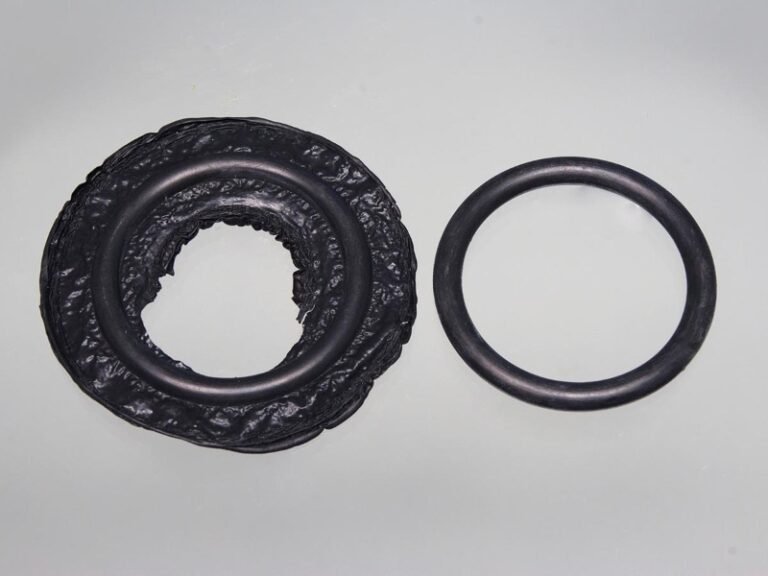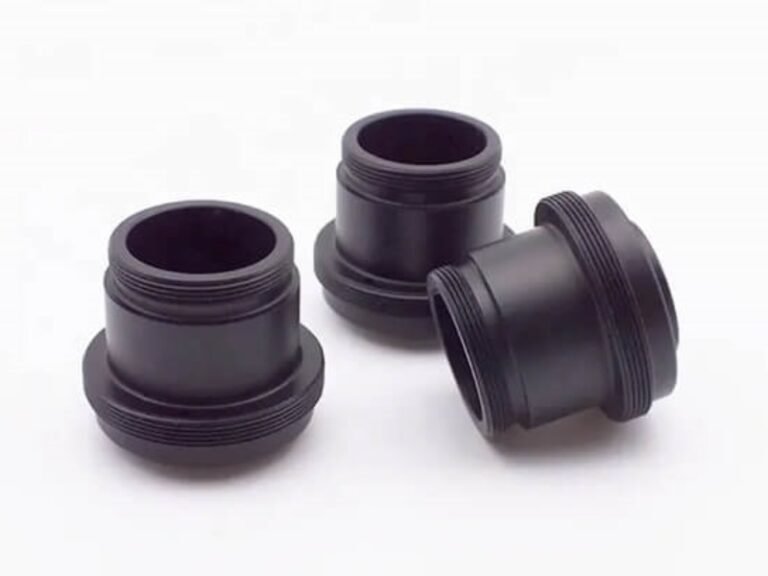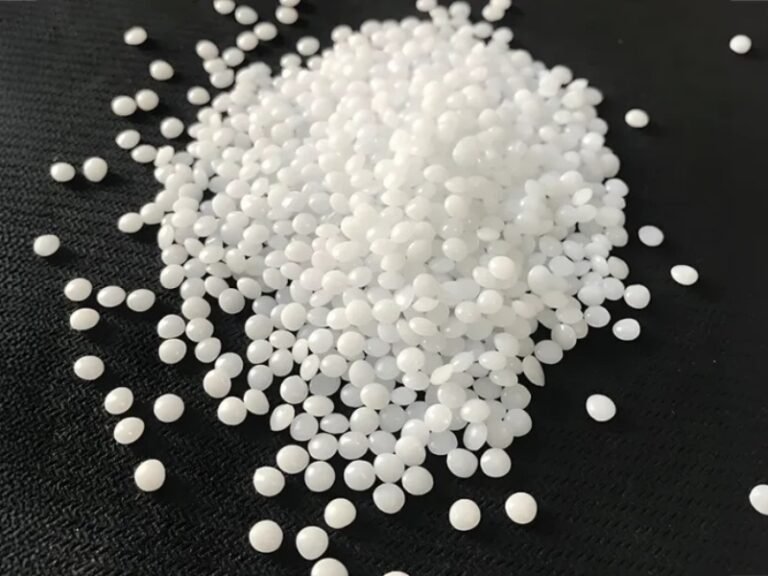Compression vs Injection Molding represents two fundamental yet distinct manufacturing processes, each tailored to different materials, production volumes, and application needs. Compression molding excels in producing large, durable parts with thermosetting plastics and composites, while injection molding dominates high-volume, precision-driven manufacturing with thermoplastics. Understanding the differences in tooling, cycle times, material compatibility, and cost-effectiveness is crucial for selecting the optimal process. This comparison explores their unique advantages, limitations, and industry-specific applications to help manufacturers make informed decisions.
What Is Compression Molding?
Compression molding is a compression molded product manufacturing process where a pre-measured amount of material, typically a thermoset or thermoplastic, is placed into a heated mold cavity. The mold is then closed with pressure, forcing the material to conform to the cavity’s shape. The heat and pressure activate the curing process for thermosets or allow thermoplastics to take shape before cooling and solidifying.

How Does Compression Molding Work?
- Material Preparation – A pre-measured amount of molding material, typically a thermoset polymer, rubber, or composite, is prepared in the form of a powder, sheet, or pre-formed shape.
- Mold Preheating – The mold is heated to a specific temperature to activate the curing process for thermoset materials or soften thermoplastics for molding.
- Material Placement – The raw material is positioned in the mold cavity. In some cases, an insert or reinforcing fiber may be added to enhance the final part’s strength.
- Mold Closing and Compression – The upper half of the mold is lowered, applying significant pressure (ranging from hundreds to thousands of psi), which forces the material to spread evenly throughout the cavity. The applied heat and pressure initiate the chemical reaction in thermosets, leading to curing.
- Curing and Cooling – The material remains under pressure as it cures (for thermosets) or cools (for thermoplastics). The duration depends on the material and part thickness.
- Part Ejection – Once the curing or cooling phase is complete, the mold opens, and the finished part is removed. In some cases, secondary trimming or finishing processes may be required to remove excess material (flash).
Learn More: Compression Molding Process

What Is Injection Molding?
Injection molding is a high-precision manufacturing process where molten plastic, rubber or other polymer materials are injected into a mold cavity under high pressure. The material cools and solidifies into the desired shape before being ejected. This process enables the mass production of complex, highly detailed custom molded parts with consistent quality and minimal post-processing.

How Does Injection Molding Work?
- Material Preparation – Thermoplastic or thermoset resins (usually in pellet or powder form) are fed into the injection molding machine through a hopper. Additives such as colorants, stabilizers, or reinforcing agents may be included to enhance material properties.
- Melting and Injection – The raw material is heated inside a barrel equipped with a reciprocating screw or plunger. The rotating screw ensures uniform melting and consistent mixing before injecting the molten plastic into the mold cavity at high pressure.
- Mold Filling – The molten material is rapidly forced into the closed mold, ensuring it fills all cavity spaces. Gates and runners within the mold direct the flow to minimize defects such as air pockets or weld lines.
- Cooling and Solidification – Once inside the mold, the material begins to cool and solidify, taking the exact shape of the cavity. Cooling channels integrated into the mold help accelerate this process for efficiency and consistency.
- Mold Opening and Part Ejection – After the plastic has hardened, the mold opens, and ejector pins push the part out. Some parts may require secondary operations like trimming, painting, or surface finishing.
Learn More: Principle of injection molding process

Key Differences Between Injection Moulding And Compression Molding
The difference between injection and compression molding lies in their processes, materials, and applications. Understanding these differences helps choose the right method for efficient, high-quality plastic part production.
Mold Design and Structure
Whether you’re working with compression molding and injection molding, mold structure plays a crucial role in determining product quality, cost, and production efficiency. While both types of molds share basic components like cavities, cores, and parting lines, the level of complexity can vary significantly.
Compression molds are generally simpler in design. They consist of a cavity and a core, often with fewer moving parts and no need for intricate runner systems. This straightforward structure makes them quicker and more affordable to produce. Because compression molding relies on direct pressing, maintaining proper alignment and applying consistent pressure across the parting line are essential to achieving uniform results.
Injection molds, on the other hand, introduce a higher level of engineering. They’re designed with integrated gating systems, cooling channels, ejector pins, and often sliding mechanisms to support automated demolding. This complexity enables higher precision and faster cycle times but also drives up tooling costs. The materials used are typically hardened steel or high-grade aluminum to ensure the molds can withstand the demands of high-volume production.
Multi-cavity setups, automatic ejection, and advanced flow control are more common in injection molding tools, allowing manufacturers to scale efficiently and minimize waste. In contrast, compression molds might still rely on manual demolding or simpler ejection aids, especially for larger, less intricate parts.
Manufacturing Process
- Compression Molding – This process is generally slower because it involves preheating the material, placing it into the mold manually or semi-automatically, and applying heat and pressure for curing. While efficient for large, flat, or thick-walled parts, cycle times can be longer due to the curing phase.
- Injection Molding – Highly automated and optimized for speed, injection molding offers short cycle times by rapidly injecting, cooling, and ejecting parts. Machines run continuously, allowing high-volume production with minimal manual intervention.
Material Compatibility
- Compression Molding – Commonly used for thermosets and rubber compounds like phenolics, epoxy, and solid rubber. These materials cure under heat and pressure, making them ideal for strong, heat-resistant parts. Materials are usually pre-formed into sheets or blocks before molding.
- Injection Molding – Best for thermoplastics such as ABS, polycarbonate, and polypropylene, which melt and can be reshaped repeatedly. Some elastomers and thermosets can also be used, but thermoplastics are more common due to faster cycles and recyclability.
Part Design
When designing molded parts, the intended manufacturing process plays a key role in determining what’s feasible. Injection molding tends to offer tighter tolerances, more consistent dimensional accuracy, and better control over surface finish—making it a strong fit for parts that require fine detail or close-fitting assemblies. Its ability to support complex geometries, thin walls, and smooth surfaces makes it ideal for high-precision components, especially in consumer products and engineering-grade applications.
Compression molding, while generally less precise, offers flexibility for larger, thicker, or less geometrically complex parts. It accommodates variations in material flow and shrinkage more naturally, which can be beneficial for rubber-based compounds or highly filled thermosets. Surface finishes may require secondary processing, especially if flash is present along the parting lines. That said, with proper tooling and part design, compression molding can still achieve impressive results—particularly for robust, functional parts where ultra-tight tolerances are not critical.
Applications
Compression molding is typically chosen for robust, heat-resistant parts like rubber seals, gaskets, and automotive panels. Injection molding suits high-precision, complex parts such as electronic housings, medical devices, and consumer product components where tight tolerances and smooth surfaces are critical.
Zhongde Offers Compression And Injection Molding—Contact Us
How to Choose the Right Molding Process for Your Project?
Selecting between compression molding vs injection molding depends on multiple factors that influence cost-effectiveness, product performance, and manufacturing efficiency. Understanding these considerations helps in making an informed decision tailored to your project requirements.
Cost Considerations
Compression molding typically has lower upfront mold costs but higher labor and cycle times, making it ideal for small-to-medium production runs. Injection molding, however, has higher tooling costs but offers low per-unit costs for large-scale production.
Quality and Precision
If tight tolerances, intricate geometries, and surface finish are critical, injection molding is the preferred choice. Compression molding, while robust, may not achieve the same fine detailing and consistency required in high-precision applications.
Production Volume
High-volume production benefits from injection molding’s fast cycle times and automation, ensuring scalability and efficiency. Compression molding is better suited for low-to-moderate production needs, particularly for large or specialized parts.
Material Selection
Injection molding is primarily used for thermoplastics, while compression molding is ideal for thermosets, composites, and rubber materials that require high durability and heat resistance. The material choice directly impacts the selection of the molding process.
Design Complexity
If a part has complex geometries, undercuts, or thin walls, injection molding offers superior precision and repeatability. Compression molding is often used for simple or large structural components that do not require intricate detailing.
Industry-Specific Recommendations
- Automotive & Aerospace: Compression molding is favored for heat-resistant and high-strength composite parts, while injection molding is used for interior components, housings, and lightweight plastic parts.
- Medical & Consumer Goods: Injection molding ensures biocompatibility, consistency, and smooth surface finishes for devices, enclosures, and packaging.
- Electronics & Electrical Components: Compression molding is ideal for thermoset insulators and circuit breakers, while injection molding is used for connectors, casings, and lightweight components.
Conclusion With Compression Molding VS Injection Molding
Compression molding and injection molding each have distinct advantages. At Zhongde, we offer both compression molding and injection molding solutions to meet your specific needs—whether you require durable, heat-resistant parts or high-precision, complex components. Contact us to find the best process for your project and get a customized quote!



